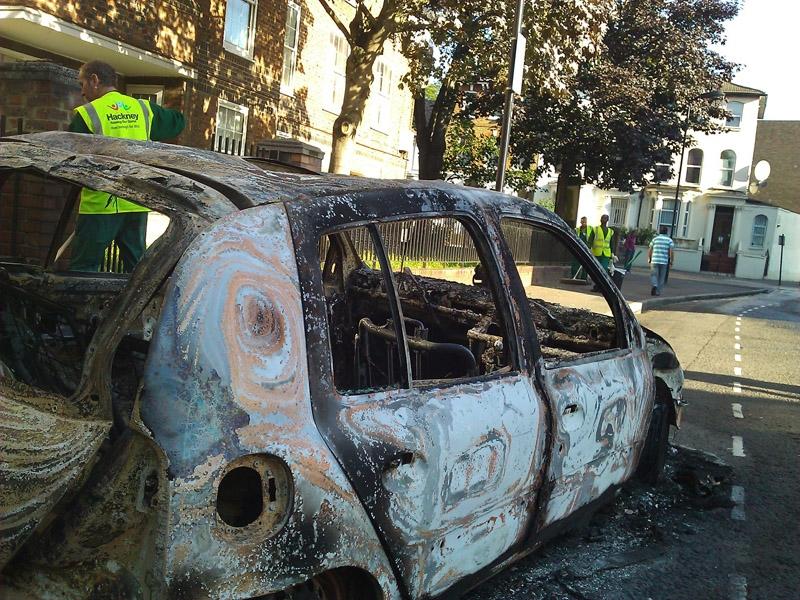It’s hard to think of a tougher topic to research than why people got involved in a riot. Thorny challenges present themselves every step of the way from recruitment to analysis, and the results are bound to be controversial.
Last month NatCen published its report on the riots that hit English cities in August. The work, conducted for the Cabinet Office, looked at the motivations of young people and the factors that nudged them to either get involved in the violence or stay away.
“In the aftermath of the riots there were all sorts of theories bandied around. We were quite keen to cut through that and collect stories, collect voices”
Gareth Morrell, NatCen
NatCen’s research was conducted in an extraordinarily tight timeframe. Just ninety days had passed between the shooting of Mark Duggan on 4 August – an event that helped spark the first riots – and the publication of NatCen’s 63-page report. More than 250 people were involved in the research, including some of the rioters themselves and others who were directly affected.
Gareth Morrell, who oversaw the project at NatCen, told Research: “In the immediate aftermath of the riots everyone had their say – there were all sorts of hypotheses and theories bandied around, and we were quite keen to cut through that and collect stories, collect voices. It was a research project in the way we went about it but it was very much an evidence-gathering exercise as well. We wanted to hear from people who were there exactly what happened and why people behaved in the way they did.”
The research looked at five parts of the country that were hit by riots, using interviews and discussion groups as well as social media analysis, assessment of conviction data and profiling of the affected areas. But it also recognised that the vast majority of young people didn’t get involved, and covered two specific areas that saw no rioting.
In London, researchers visited Tottenham, Peckham and Battersea, and other teams went to Birmingham and Salford. Teams also studied the unaffected areas of Poplar in East London and Firth Park in Sheffield. To ensure that the rioters themselves were properly represented, around 40 interviews were conducted in prisons.
“We used as diverse as possible a group of gatekeepers to help us recruit,” said Morrell. “Not just churches and mosques or local authority services but also trying to recruit people through more recreational places like pool halls and gyms, to make sure that those people who don’t necessarily engage with local service providers also had the opportunity to take part.”
Fieldwork took place four to six weeks after the riots, when feelings were still raw and the damage to communities still visible. To make things even more difficult, police were still after the criminals. “Trying to get people to talk to you about having been involved, when we are effectively commissioned by the government, and when there’s still a police investigation going on to catch perpetrators, was a real challenge,” said Morrell.
As a result, the teams had to be flexible about recruitment and sampling to make sure all groups were properly represented. It was crucial, Morrell said, “to be absolutely clear about our independence, about our confidentiality and disclosure policies, and communicating those in straightforward language”.
Interviewers had to be careful to avoid people post-rationalising or repeating explanations they had picked up elsewhere. “What we asked people to do was to talk through the experience on the night,” said Morrell. “We didn’t ever really ask the open question of ‘Why did you get involved?’ That came through them talking about different things. We might ask, why did you do that at that point, would you have done anything different, what were your friends doing at that time. We had show cards for different levels of involvement – for example I stole something from a shop, I picked something up from the floor, I smashed a window – if they didn’t feel comfortable on tape admitting to certain things.
“We were quite keen, if people said something like ‘It’s about youth cuts’, to prompt them to be specific. Where do you see youth cuts having an impact in your area? Get them to pick out a youth club and ask, did you use it? A lot of people say youth cuts and didn’t actually use the services. So it’s about getting them to be very specific, very autobiographical about the timeline of the night.”
The research concluded that young people were motivated to get involved in rioting and looting by certain perceived benefits: a bit of excitement, some free stuff, or a chance to get back at the police. Whether or not they acted on those motivations depended on their own attitudes, prospects, and whether they had been involved in crime before, as well as group dynamics, what people saw happening around them, and the influence of their family, community and society.
Young people and community stakeholders pointed to a materialistic culture that fosters greed as an important factor, combined with anger and resentment towards authority figures, particularly politicians.
In areas where riots did not break out, some of the same contextual factors were in place, but influences that nudged people to get involved were missing, or other things were present that held them back. In Sheffield, social inequality was seen to be less obvious than in other places, and in Poplar young people described a close community “where people say hello to each other”.
One important point that Morrell feels was overlooked in some of the initial responses to the riots was that the behaviour of many of those who took part in the riots was atypical. NatCen’s report found that many saw the riots as “a day like no other”, when normal rules did not seem to apply.
Despite the highly charged atmosphere during and immediately after the riots, things seemed to have calmed down a bit by the time NatCen’s report was published. The results have not been highly politicised, partly because the government is still waiting for the report of the Independent Riots Communities and Victims Panel in March.
Morrell feels the findings have been received well. “The press reporting was very balanced and took from the key messages,” he said. “There wasn’t anyone saying, this isn’t accurate, or these methods are dubious – that’s been good for us. It was picked up by the Prime Minister in his response to the liaison committee a few weeks back – he referenced the report to talk about how one of the key differences between people who did and didn’t get involved was related to their stake in society.”
NatCen haven’t been the only ones trying to understand the riots. There was a flurry of opinion polls shortly after the events and a study by The Guardian and the London School of Economics based on 270 in-depth interviews and an analysis of Twitter (which also helped to reveal how unfounded rumours about tigers being released from London Zoo and rioters cooking their own food in McDonalds managed to spread through social media). Naked Eye Research conducted some post-riot interviews with young people in Woolwich, South London.
Morrell hopes the report contributes to a balanced view of what happened on the night, to paint “a more complex, nuanced picture” than the initial knee-jerk reactions. “That was always our main aim and I think we’ve done that, he said. “I hope the report continues to do that, wherever it’s taken next.”








0 Comments